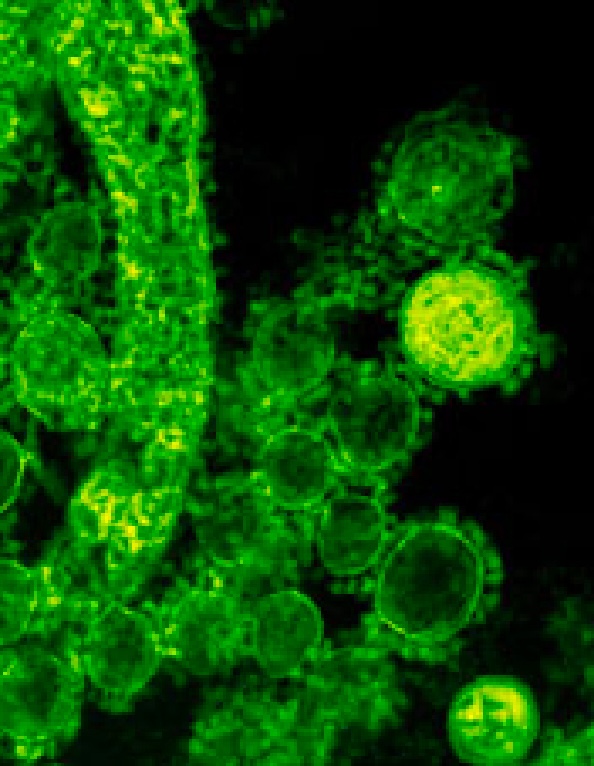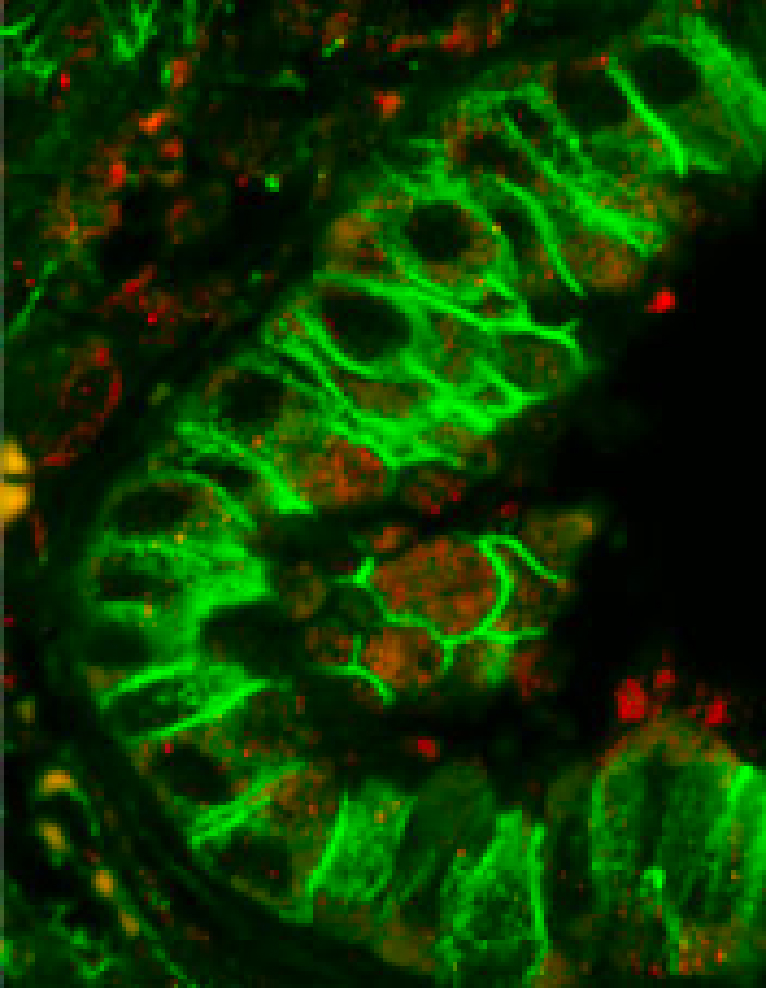Understanding host-dependent replication of viruses
Viruses have limited genetic information due to their small genome.
Over the years, our group focuses on the identification of host proteins required for virus replication.

Adaptations of viral polymerase to new hosts are essential process
The nature hosts of influenza A viruses are aquatic birds. Why can avian influenza viruses adapt to humans by mutating the viral polymerase?
To address this, we aim to elucidate the function of adaptive mutations and molecular mechanism of viral RNA synthesis.
- Point mutations (such as Lys627 of PB2 gene) is responsible for the outbreak of avian flu in humans
- Pandemic flu strains have higher transcription activity
- Host factors (eg. ANP32/pp32) are essential for viral polymerase activity
Intracellular transport of viral factors
Viral genomes and proteins are transported using endocytic vesicles to assemble viral particles.
How do viruses hijack the cellular organelles?
- Endocytic transport is activated and utilized by viruses
- The transport pathway is well-organized to form functional and stable viral particles
- Defective transport of viral genomes activates cellular immune responses
Anti-viral defense system
Host cell recognizes viruses as a non-self. This triggers production of inflammatory cytokines to recruit immune cells. How viruses overcome the immune responses?
- Mx gene serves as a virus sensor in respiratory epithelium
- Escape mutations against Mx gene is essential for adaption of avian flu to humans
- Influenza viruses can repress inflammatory responses in respiratory epithelium but not in immune cells

宿主に依存したウイルス複製機構の解明
ウイルスはゲノムサイズが小さいため、遺伝子数が限られます。
そのため、ウイルスは宿主の因子を強奪することで複製しており、新しいウイルスがヒトへの感染能を獲得するには、ヒトの宿主因子に適応することが必要です。
私たちのグループではウイルスの複製に必要な宿主タンパク質の同定と機能解析をめざしています。

Adaptations of viral polymerase to new hosts are essential process
A型インフルエンザウイルスの自然宿主は水鳥です。鳥インフルエンザは複製酵素であるウイルスポリメラーゼに変異を獲得することで、どのように人に適応するのだろう?
- ウイルス遺伝子の点変異(例えば、PB2遺伝子のLys627)で鳥インフルエンザは人に感染可能
- パンデミックウイルスは高い遺伝子発現能をもつ
- 宿主因子(例:ANP32/pp32)はウイルスポリメラーゼの活性に必須
Intracellular transport of viral factors
ウイルスゲノムやウイルスタンパク質は細胞内小胞輸送により時空間的に制御され、ウイルス粒子が形成されます。ウイルスは小胞輸送系をどのように制御しているのだろう?
- ウイルスは細胞内小胞輸送を活性化
- 小胞輸送経路はウイルス粒子形成に必須
- ウイルスゲノムの細胞内輸送を制御することで免疫応答から回避
Anti-viral defense system
宿主細胞はウイルスを非自己として認識し、炎症応答を介して免疫細胞をリクルートします。一方、ウイルスはこれらの抗ウイルス応答を回避することで増殖します。
ウイルスは宿主免疫とどのように競合しているのだろう?
- Mx遺伝子は気道上皮特異的な炎症を制御する病原体センサー
- Mx遺伝子からの逃避変異を獲得して鳥インフルエンザは人に適応する
- インフルエンザは気道上皮細胞特異的に炎症応答を抑制する

